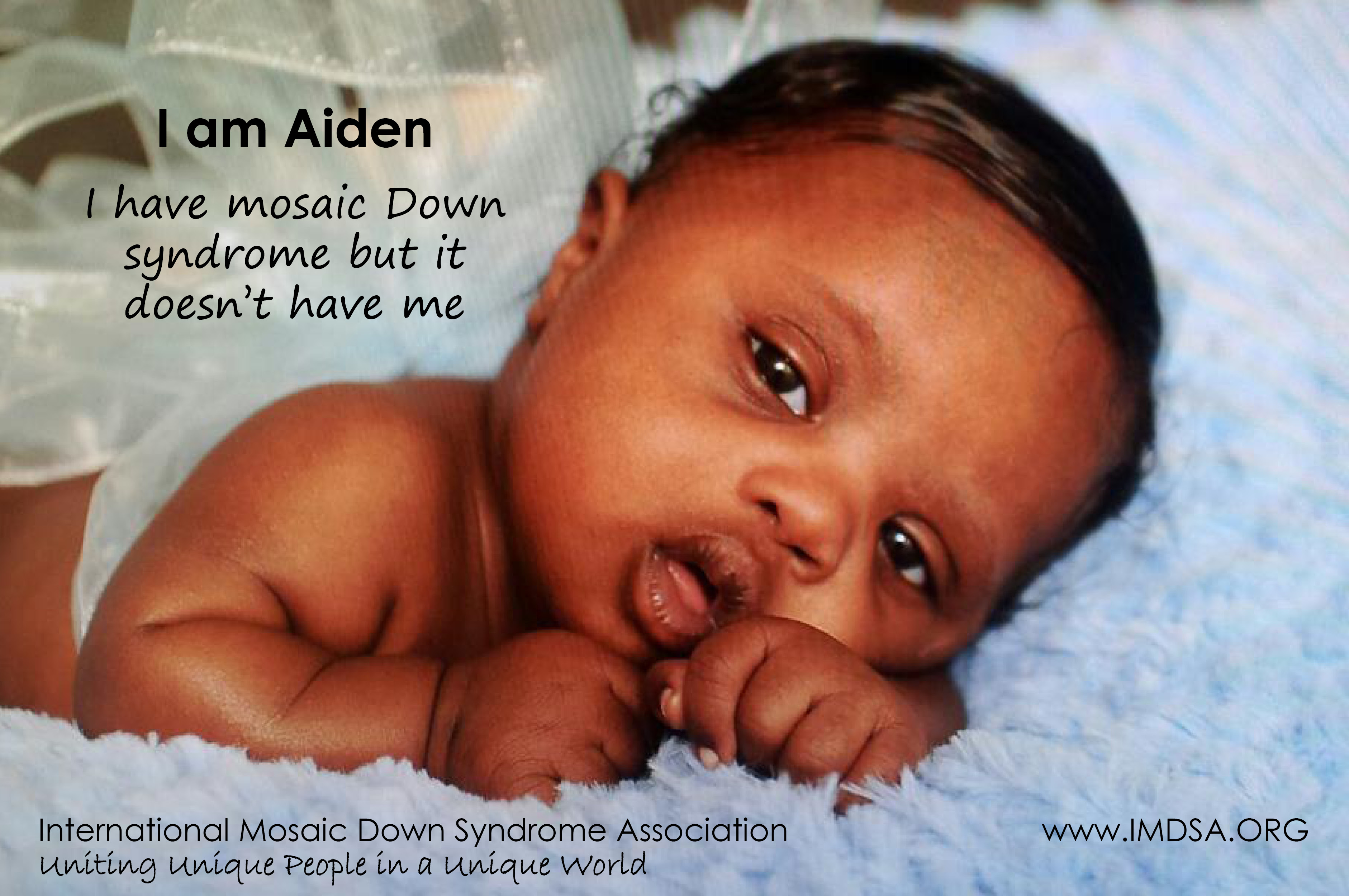

In a previous study, a comparison between monozygotic twins discordant for trisomy 21 had been performed. In order to determine the mechanism of development of Down syndrome, normal cells are needed as controls. Attempts to normalize chromosomal abnormalities have been drawing intense research interest in the study of Down syndrome using iPSCs. Therefore, they are widely used to clarify disease etiology and test therapeutic drugs. Immortality of induced pluripotent stem cells (iPSCs) makes it possible to obtain a large number of cells from a small specimen, and pluripotency enables differentiation into various cell types. Further studies are necessary in order to determine the efficacy of these therapies. Neural stem cell-based therapy was also attempted with neonatal Down syndrome mice. Maternal supplementation of low molecular weight molecules such as epigallocatechin-3-gallate, fluoxetine, neuroprotective peptide, and choline during pregnancy improve function of these model mice. Likewise, Ts1Cje carries a segmental trisomy of mouse chromosome 16 and shows Down syndrome-related abnormalities such as craniofacial alterations and spatial learning deficits.

Ts65Dn mice mimic the human condition, including developmental delay and memory deficit, and may therefore be used for drug development with the aim of improving cognitive function. These models are used for exploration of the etiology of Down syndrome and drug development. Since the distal part of mouse chromosome 16 is orthologous to a large portion of human chromosome 21, mouse models, in particular the chromosome 16 segmental trisomies, Ts65Dn and Ts1Cje, were produced. To develop drugs for Down syndrome, murine models for Down syndrome or trisomy 21 have been developed. Additionally, low molecular weight molecules that improve the phenotype of Down syndrome have also been tested. DYRK1A inhibitor as a therapeutic agent for Down syndrome has been widely studied and developed and has been tested in clinical trials. DYRK1A has attracted attention as a target for normalizing the phenotype of Down syndrome. In addition, dual specificity tyrosine phosphorylation-regulated kinase 1A (DYRK1A) and Down syndrome critical region gene 1 (DSCR1) on chromosome 21 are related to neurogenesis. Triplication of specific regions of chromosome 21, band 21q22, causes various physical and cognitive phenotypes of Down syndrome, and the causative genes include amyloid beta precursor protein (APP) related to Alzheimer’s disease, and superoxide dismutase 1 (SOD 1) involved in the onset of amyotrophic lateral sclerosis. Ninety percent of Down syndrome cases are due to an extra copy of chromosome 21 and the remainder exhibit imbalanced translocation or mosaicism.
#Mosaic down syndrome skin#
Hyperkeratosis of the skin is occasionally observed. In addition, leukemia, cardiac malformation, hearing disorders, and vision disorders are also seen at a high rate. All Down syndrome patients have mental retardation and are prone to develop early onset Alzheimer’s disease. Down syndrome is the most frequent chromosomal abnormality among live-born infants. On the other hand, there are few genetic disorders in which early diagnosis contributes to the improvement of the prognosis of children. Due to the availability of diagnostic techniques such as non-invasive prenatal genetic testing and improvement of imaging technology, congenital diseases including chromosomal abnormalities are possible to diagnose earlier than before. Recently, attention to prenatal diagnosis is increasing due to the higher average age of pregnant women. The revertant diploid cells will possibly serve a reference for drug screening and a raw material of regenerative medicinal products for cell-based therapy. We herewith report the spontaneous correction from chromosome 21 trisomy to disomy without genetic manipulation, chemical treatment or exposure to irradiation. Repeated experiments revealed that this trisomy rescue was not due to mosaicism of chromosome 21 diploid cells and occurred at an extremely high frequency. In this study, we continuously cultivated induced pluripotent stem cells (iPSCs) with chromosome 21 trisomy for more than 70 weeks, and serendipitously obtained revertant cells with normal chromosome 21 diploids from the trisomic cells during long-term cultivation. However, it has not yet been elucidated whether there is a correlation between the phenotype of Down syndrome and the extra chromosome 21.


 0 kommentar(er)
0 kommentar(er)
